Wrist Flexion & Extension
Wrist flexion and extension refer to the movements that occur at the wrist joint, allowing for bending and straightening of the hand relative to the forearm. These movements are vital for performing various activities of daily living and are used in numerous sports, exercises, and occupational tasks.
Table of Contents
Wrist Flexion
What is Wrist Flexion?
- Wrist flexion refers to a movement in which the wrist joint is flexed or flexed, causing the palm to move closer to the inside of the forearm. It involves the action of several muscles located on the anterior (front) side of the forearm. These muscles contract to produce a wrist flexion movement.
The primary muscles responsible for flexing the wrist are the flexor carpi radialis, flexor carpi ulnaris, and palmaris longus. These muscles originate from the medial (inner part) of the elbow and forearm and attach to the bones at the base of the wrist or hand. Wrist flexion is commonly used in a variety of everyday and athletic activities, such as grasping objects, lifting weights, and swinging a tennis racket. It is also a necessary movement for many professional tasks, including writing, typing, and playing an instrument.
It is important to note that wrist flexion is only one of many movements that can occur in the wrist joint. Other movements include wrist extension (bending the wrist back), radial deviation (moving the wrist to the side of the thumb), and ulnar deviation (moving the wrist to the side of the little finger). The combination of these movements allows a wide range of dexterity and functionality in the hands and wrists.
Wrist Flexor Muscle
On the front (front) side of the forearm, there is a group of muscles known as the wrist flexors. These muscles work together to produce wrist flexion, a movement in which the wrist is bent and the palm is brought closer to the inside of the forearm. The main wrist flexor muscles are:
- Flexor Carpi Radialis: This muscle originates from the medial (inner) epicondyle of the humerus (arm bone) and is located at the base of the second and third metacarpals of the hand. This helps with wrist flexion and also helps with radial deviation (moving the wrist to the side of the thumb).
- Flexor Carpi Ulnaris: This muscle originates from the medial epicondyle of the humerus and the olecranon process of the ulna (one of the bones of the forearm) and is located on the petiole and the base of the fifth metacarpal. It flexes the wrist and also contributes to ulnar deviation (moves the wrist to the side of the little finger).
- Palmaris Longus: Not all people always have this muscle. It originates from the medial epicondyle of the humerus and travels to the palmar aponeurosis (a broad, flat tendon in the palm of the hand).
Other muscles that contribute to wrist flexion to a lesser extent are the flexor digitorum superficialis and flexor digitorum profundus, which mainly flex the fingers but also have some effect on wrist flexion. These muscles play an important role in activities that involve grasping, grasping, and bending the wrist, providing strength and control during hand and forearm movements.
Range of Motion of Wrist Flexion
The normal range of motion for wrist flexion, which means the movement by bending the wrist forward, is about 80-90 degrees. This means that when the wrist is fully flexed, the palm can approach the inside of the forearm at an angle of about 80-90 degrees. However, it is important to note that the actual range of motion may vary between individuals and may be affected by factors such as age, flexibility, and any underlying illnesses or injuries. It is always best to consult with a doctor to accurately assess the movement of the wrist.
You can check your wrist flexion range of motion by doing the following simple assessment:
- Sit or stand comfortably with your forearm on a table or other flat surface, palm up.
- Keep your elbows still and relaxed during the assessment. Slowly bend your wrist, bringing your palm closer to the inside of your forearm. This is wrist flexion.
- When the wrist bends, pay attention to the angle between the forearm and the back of the hand.
- You can estimate the degree of bending visually or use a goniometer (gauge) if available.
- Gradually increase the bend until you feel a comfortable stretch or until you can no longer move without pain or discomfort.
- Notice the angle at which your wrist is bent. You can compare this to the normal range of motion mentioned earlier (about 80-90 degrees) to gauge if your range of motion is within the expected range.
- Repeat the assessment for the other wrist.
Be sure to complete the assessment and stop if you feel pain or discomfort.
Wrist Flexion Test
You can perform a simple wrist flexion test by trying the following steps:
- Sit or stand in a comfortable position with your forearms resting on a flat surface such as a table.
- Keep your elbows at about a 90-degree angle and lean against the surface, palms facing up.
- Start with your wrist in a neutral position, meaning it is neither bent nor extended.
- Bend your wrist slowly and firmly, bringing your palm closer to the inside of your forearm.
- Focus on using your forearm muscles to initiate and control the movement.
- Continue to bend your wrist until you reach the maximum comfortable range of motion or until you feel a slight stretch.
- Note the angle between the forearm and the back of the hand.
- Hold the position for a moment, making sure you don’t feel any pain or discomfort.
- Return the wrist to a neutral position and reverse the movement, gradually extending the wrist.
- Repeat the test a few times to ensure consistency and note the differences between the left and right wrists.
- During the test, note any pain, unusual sensations, or limited movement.
Wrist Flexion Exercises
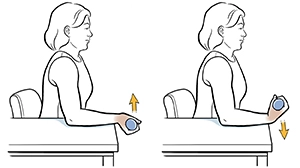
Here are some examples of wrist flexion exercises that will help strengthen the involved muscles and improve wrist flexibility:
Wrist curls with dumbbells:
Sit in a chair with your arm resting on your thigh, palm up and wrist hanging off the edge. Hold a stop in your hand with the bottom handle. Slowly bend your wrist up, shifting your weight to your forearm. Then, steadily drop the weight back to the starting position after a little pause at the top. Do 2-3 sets of 10-15 repetitions for each arm.
Wrist flexibility:
Extend your arms in front of you at shoulder level, palms up. With the other hand, gently grasp the fingers and pull them down to create a stretch in the wrist and forearm. Hold the stretch for 15-30 seconds while maintaining a gentle and constant pull. Repeat the stretch 2-3 times for each arm.
Wrist flexion with a resistance band:
Sit in a chair with your arm resting on your thigh, palm up and wrist hanging off the edge. Wrap one end of the resistance band around your fingers and hold the other end with your hand. Keeping your forearm still, bend your wrist as you pull the resistance band toward your forearm. Hold for a moment and then slowly release the bar back to the starting position. Do 2-3 sets of 10-15 repetitions for each arm.
Flexing the wrist with a pressure ball:
Hold a stretch ball or press the ball into the palm of your hand. Squeeze the ball as hard as you can while bending your wrist forward. Hold the pressure and wrist flexion for a few seconds, then release. Ten to fifteen times for each hand, repeat the exercise. Be sure to start with lighter weights or resistance and gradually increase as you build strength and comfort.
Special Test For Wrist Flexion
Healthcare professionals may use special tests to assess wrist flexion and evaluate potential problems or injuries. Here is an example of a special test called the “wrist flexion test” or the “Phalen test”.
- Begin by sitting or standing in a comfortable position with your arms relaxed at your sides.
- Place the backs of your hands together, fingers down, and wrists at a 90-degree angle, forming a prayer position.
- Stay in this position for about 1 minute. Pay attention to any sensations you experience during the test, such as pain, tingling, numbness, or weakness in your wrists, hands, or fingers.
- If you notice symptoms such as an increase or intensity of pain or the development of abnormal sensations, this may indicate compression or irritation of the median nerve, It may be related to diseases like carpal tunnel syndrome.
Wrist Extension
What is a Wrist Extension?
- Wrist extension is a movement in which the wrist is bent backward, away from the palm, and towards the back of the hand. This is the opposite movement of wrist flexion. Anatomically, it involves the dorsal (backward) movement of the hand relative to the forearm.
During wrist extension, the angle between the forearm and the hand increases as the back of the hand moves away from the forearm. This movement occurs mainly at the radiocarpal joint, which is the joint formed between the radius of the wrist (one of the bones in the forearm) and the carpal bone. Wrist extension is facilitated by the contraction of the wrist extensor muscles, which are primarily located on the back of the forearm. These muscles include the extensor carpi radialis longus, extensor carpi radialis brevis, extensor carpi ulnaris, and other extensor muscles that also play a role in extending the fingers.
Wrist extension is important for activities such as pushing, lifting, and movements that require the back of the hand to move away from the forearm. It promotes overall flexibility and functionality of the hand and wrist.
Wrist Extensor Muscle
The wrist extensors are a group of muscles located on the back of the forearm. These muscles work together to produce wrist extension, a movement in which the wrist is bent backward and the back of the hand is moved away from the forearm. The main extensor muscles of the wrist are:
Extensor Carpi Radialis Longus: This muscle originates on the lateral (outer) side of the humerus (arm bone) and inserts on the base of the second metacarpal bone of the hand. This promotes wrist extension and also helps with radial deviation (moving the wrist from the side of the thumb).
Extensor Carpi Radialis Brevis: This muscle also originates on the lateral side of the humerus but inserts on the base of the third metacarpal. It works with the extensor carpi radialis longus to extend the wrist and help with radial deviation.
Extensor Carpi Ulnaris: This muscle arises from the posterior surface of the ulna (one of the forearm bones) and the lateral epicondyle of the humerus. It is inserted at the base of the fifth metacarpal bone and is responsible for wrist extension and ulnar deviation (shifts the wrist to the side of the little finger).
Extensor: This muscle originates from the lateral epicondyle of the humerus and runs along the back of the forearm. It inserts into the extensor digitorum muscle and is primarily responsible for extending the fingers, but also helps extend the wrist. Extensor tendon muscle: This muscle is a continuation of the extensor muscle and extends specifically to the index finger. It helps to extend the index finger and also helps to extend the wrist.
These muscles play an important role in various activities that involve the extension of the wrist, such as lifting, pushing, and making movements that require the back of the hand to move away from the forearm. They provide strength, stability, and control during arm and forearm movements.
Wrist Extension Test
One common test used to assess wrist extension is the “wrist extension test” or “Watson test”. This can help identify certain conditions, such as scapholunate instability or ligament damage. The test is performed as follows:
- Begin by sitting or standing in a relaxed position with your forearm resting on a table or other flat surface, palm down.
- The examiner stands next to the tested wrist and stabilizes the forearm to prevent movement.
- On the other hand, the examiner places the thumb on the patient’s articular bone (located on the radial side of the wrist) and the index finger on the metatarsal bone.
- The examiner then applies a backward force to the patient’s wrist while maintaining pressure on the occiput and ears. The patient is instructed to resist the force applied by the examiner while trying to extend the wrist.
- The test is considered positive if the patient experiences pain, instability, or a “tired” feeling in the wrist when applying force.
- A positive test result may indicate ligament injury or instability.
- It is important to note that the Watson test is only one of many tests that can be used to assess wrist extension and diagnose specific conditions.
Range of Motion of Wrist Extension
Wrist extension range of motion, which refers to the motion of bending the wrist backward, can vary from person to person. However, the normal wrist extension range of motion is usually around 70-80 degrees.
To assess the wrist range of motion, you can take a simple measurement with a goniometer, which is commonly used to measure joint angles. This can be done as follows.
- Sit or stand in a comfortable position with your forearm resting on a flat surface, such as a table, palm down. Keep your elbows at about a 90-degree angle and your wrists in a neutral position (not bent or extended).
- Extend your wrist slowly and smoothly, moving the back of your hand away from your forearm.
- While extending the wrist, have someone place the goniometer on the back of their hand and place one hand of the goniometer on the forearm and the other hand on the back.
- Read and record the angle indicated by the goniometer when you have reached the maximum comfortable range of wrist extension.
- Repeat the measurement a few times to ensure consistency and note the differences between the left and right wrists.
- Keep in mind that this measurement is approximate and may vary based on factors such as individual anatomy, flexibility, and any underlying illnesses or injuries.
Wrist Extension Exercises
Here are some wrist extension exercises to help strengthen the muscles involved and improve wrist flexibility:
Wrist Extension Curls:
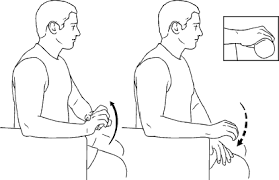
Sit in a chair with your forearm resting on a table or thigh, palm down, and wrist extended over the edge of the surface. Hold a light dumbbell or a household object such as a food can. Slowly bend your wrist upwards, lifting the weight towards the ceiling. Then, steadily drop the weight back to the starting position after a little pause at the top. Do 2-3 sets of 10-15 repetitions for each arm.
Reverse Wrist Curls:
Take the same starting position as the wrist extension curl, but instead, the palm is facing up. Hold a light stop or household item. Slowly bend your wrist down and bend it in the opposite direction. Pause for a moment at the bottom, then slowly raise your wrists back to the starting position. Do 2-3 sets of 10-15 repetitions for each arm.
Wrist extension:
Palms facing down, extend your arms out in front of you at shoulder height. With the other hand, gently grasp the fingers and pull them down, allowing the wrist and hand to extend. Hold the stretch for 15-30 seconds while maintaining a gentle and constant pull. Repeat the stretch 2-3 times for each arm.
Rubber band extension:
Place a rubber or resistance band around your fingers and thumb, palm down. Extend your fingers as far as possible against the resistance of the strap and at the same time extend your wrist. Hold the extended position for a few seconds and then relax your arms. Each hand should be used 10-15 times during the activity. Remember to start with lighter resistance or weights and gradually increase them as you build strength and comfort.
A Special Test For Wrist Extension
There is no specific test commonly used to assess wrist extension. However, some clinical tests can be useful in evaluating certain diseases or injuries involving the wrist. here are some samples:
Cozen’s test (tennis elbow test):
This test is primarily used for lateral epicondylitis (commonly known as tennis elbow) but indirectly involves wrist extension. The examiner asks the patient to make a fist, extend the arm (turn the palm down) and extend the wrist against resistance. The examiner prevents the patient from extending the wrist if the patient resists movement. Lateral pain or discomfort (bony feeling on the outside of the elbow) during this movement is considered a positive test result.
Mills test:
The Mills test is used to evaluate De Quervain’s tenosynovitis, which affects the tendons on the thumb side of the wrist. The examiner passively flexes the patient’s thumb across the palm while abducting the wrist ulnar (moving it to the side of the little finger). If the patient feels pain or discomfort in the area where the tendons cross the radial styloid process (the bony protrusion on the thumb side of the wrist), the test is considered positive.
Finkelstein’s test:
Finkelstein’s test is also used to evaluate De Quervain’s tenosynovitis. The examiner asks the patient to make a fist with the thumb inside the fingers and then bend the wrist to the side of the little finger (elbow deviation). A positive test result is considered pain or discomfort in the area where the tendons cross the radial styloid process during its movement. It is important to note that these tests are only a few examples and are not exhaustive.
Other wrist movements
It’s worth noting that in addition to flexion and extension, the wrist joint also allows for other movements such as abduction (moving the hand away from the midline of the body) and adduction (bringing the hand back toward the midline).
Strengthening and stretching exercises for the wrist flexors and extensors can help improve flexibility, stability, and grip strength. If you have specific concerns or require exercises for rehabilitation or fitness purposes, it’s advisable to consult with a healthcare professional or a certified hand therapist who can provide personalized guidance based on your individual needs.
Summary:
Wrist flexion and extension are movements of the wrist joint that involve bending the hand toward the inner side of the forearm (flexion) or straightening the hand away from the forearm (extension). These movements are controlled by specific muscles in the forearm.
Wrist flexion is performed by the flexor carpi radialis, flexor carpi ulnaris, and palmaris longus muscles, while wrist extension is carried out by the extensor carpi radialis longus, extensor carpi radialis brevis, and extensor carpi ulnaris muscles.
Strengthening and stretching exercises for these muscles can improve wrist flexibility, stability, and grip strength. If you have specific needs or concerns, it is recommended to consult with a healthcare professional or certified hand therapist for personalized guidance.
FAQs
These muscles are: flexor carpus radialis, flexor carpus ulnaris and palmaris longus. These three muscles originate in the humerus and cross the forearm and extend through the wrist by tendons and insert into the bones of the hand.
This deep section is formed by the supinator muscle, abductor pollicis longus muscle, extensor muscle, extensor longus muscle and extensor muscle. Which two muscles extend the wrist? Extensor Carpi radialis longus together with extensor Carpi radialis brevis produces wrist extension and abduction (radial deviation).
Hang your wrist with the palm facing down over your knee or the edge of a table. Keep your forearm still and bend your wrist upwards. Raise the stop as high as possible. Slowly lower the weight from the arm.
Palmar radiocarpal ligaments
The anterior/distal margin of the radius is the origin of the palmar radiocarpal ligament, which extends distally to the humerus, lunate, and capitulum.
The median nerve: what it is, location, innervation, damage and… The median nerve is the main nerve of the upper limb because it innervates the main muscles that allow a person to bend the wrist and fingers and resist the thumb.
A neutral wrist position is the most protective. This is the position where your hand is in line with your wrist. The flexed position is palm down, with the palm and fingers curled toward the inner wrist. The extended position is palm up.

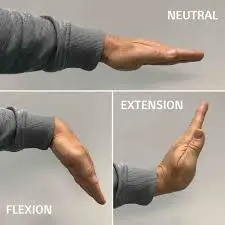
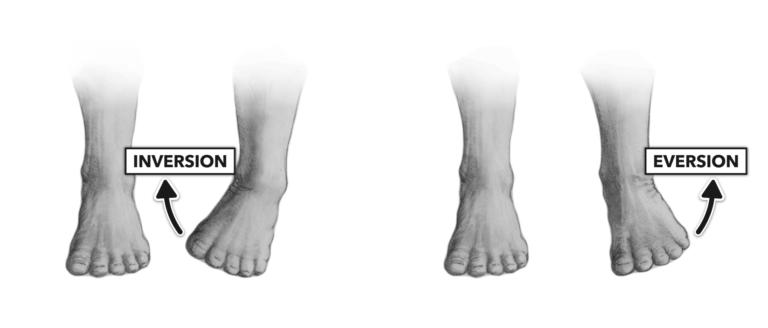


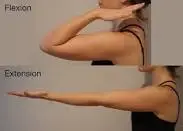
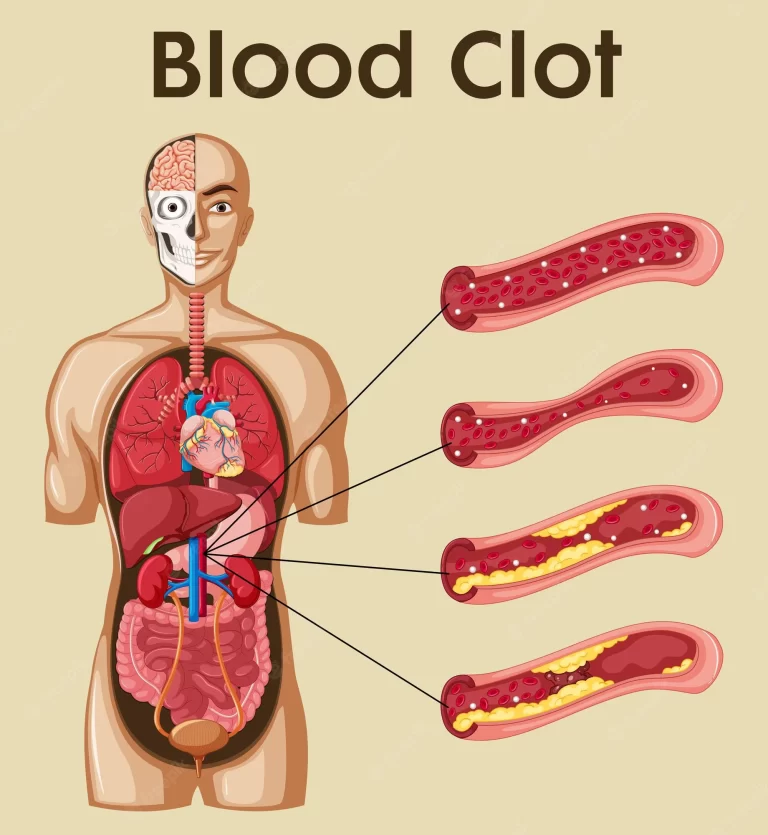
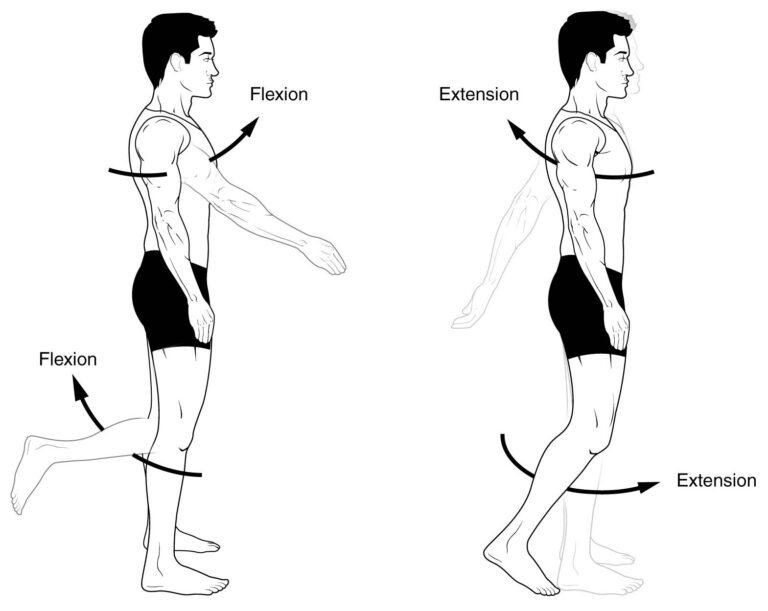
One Comment